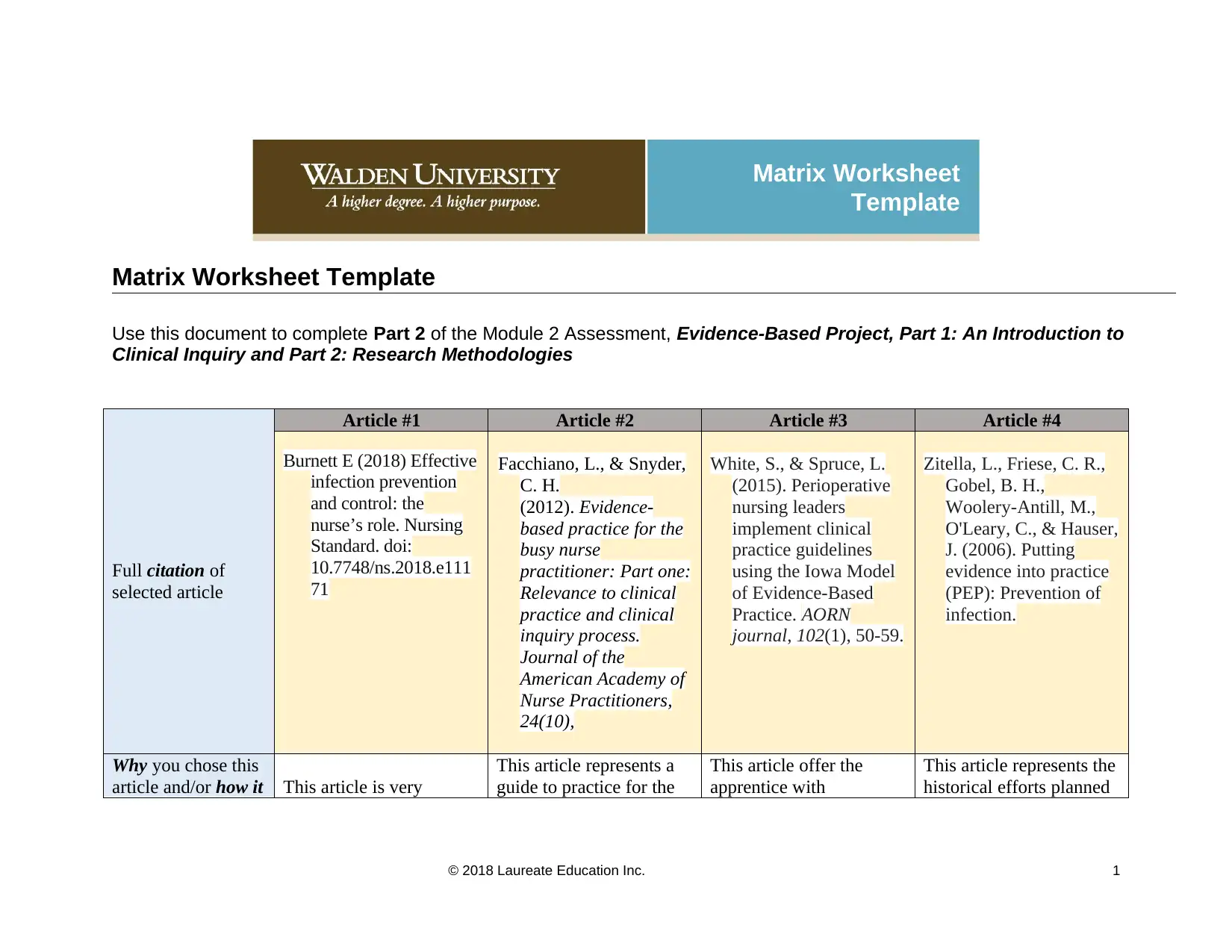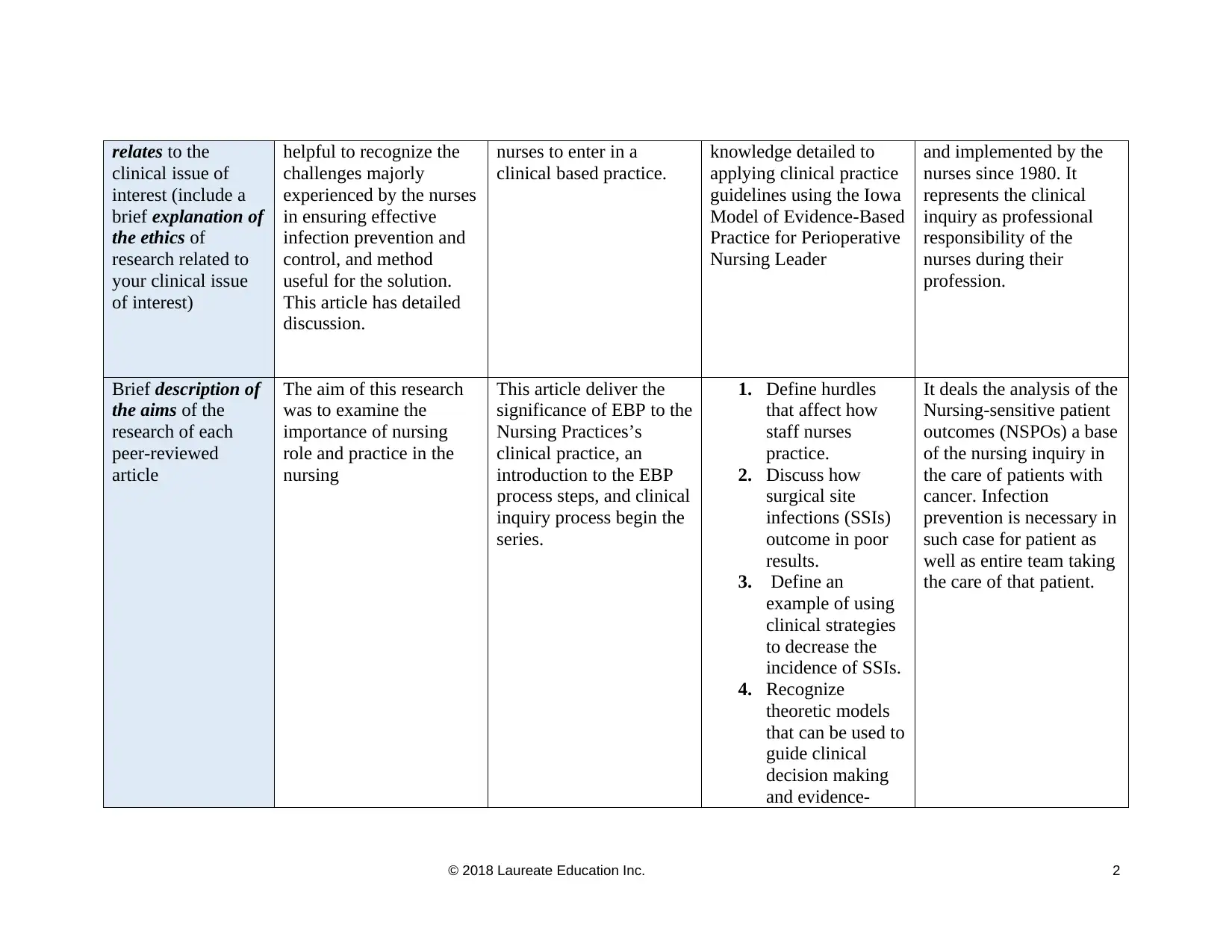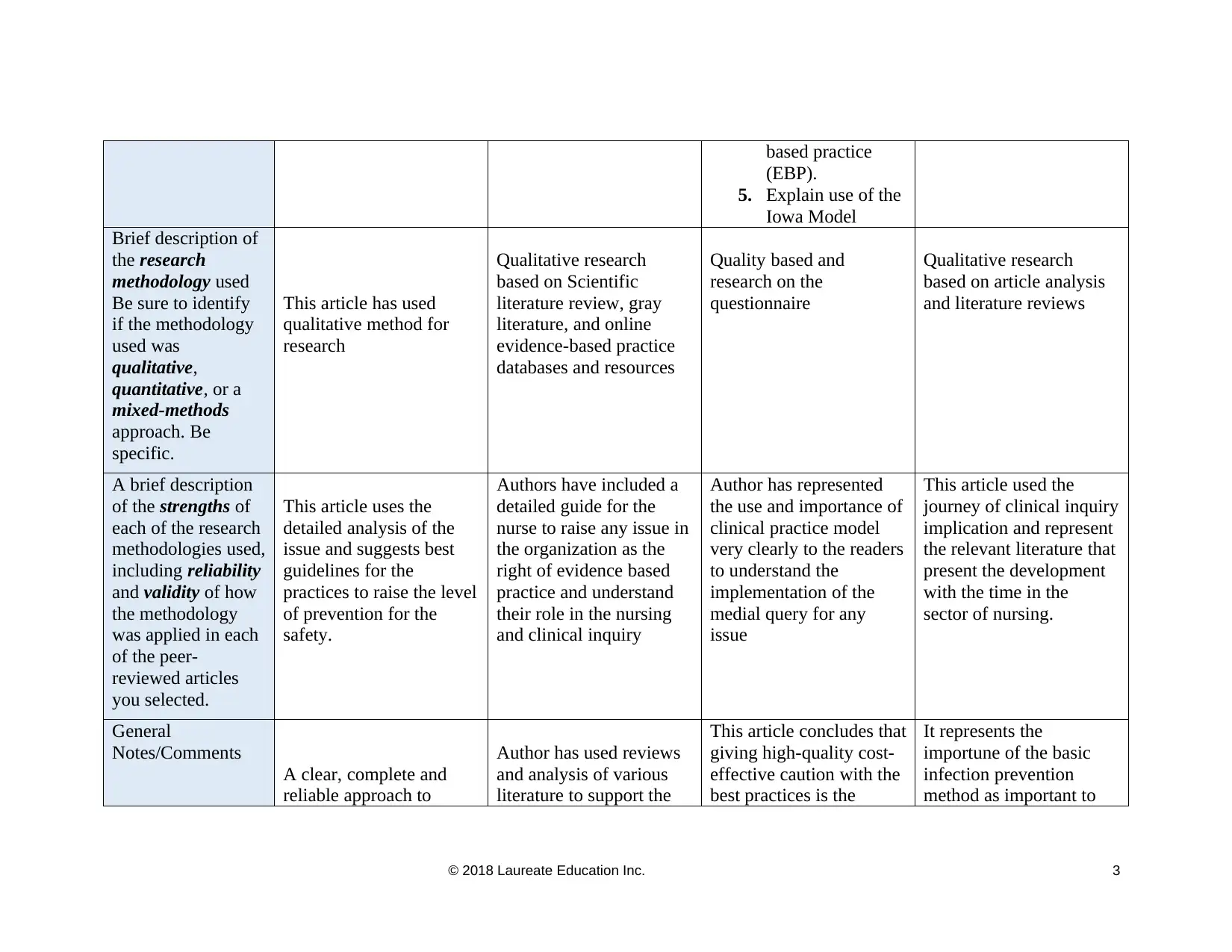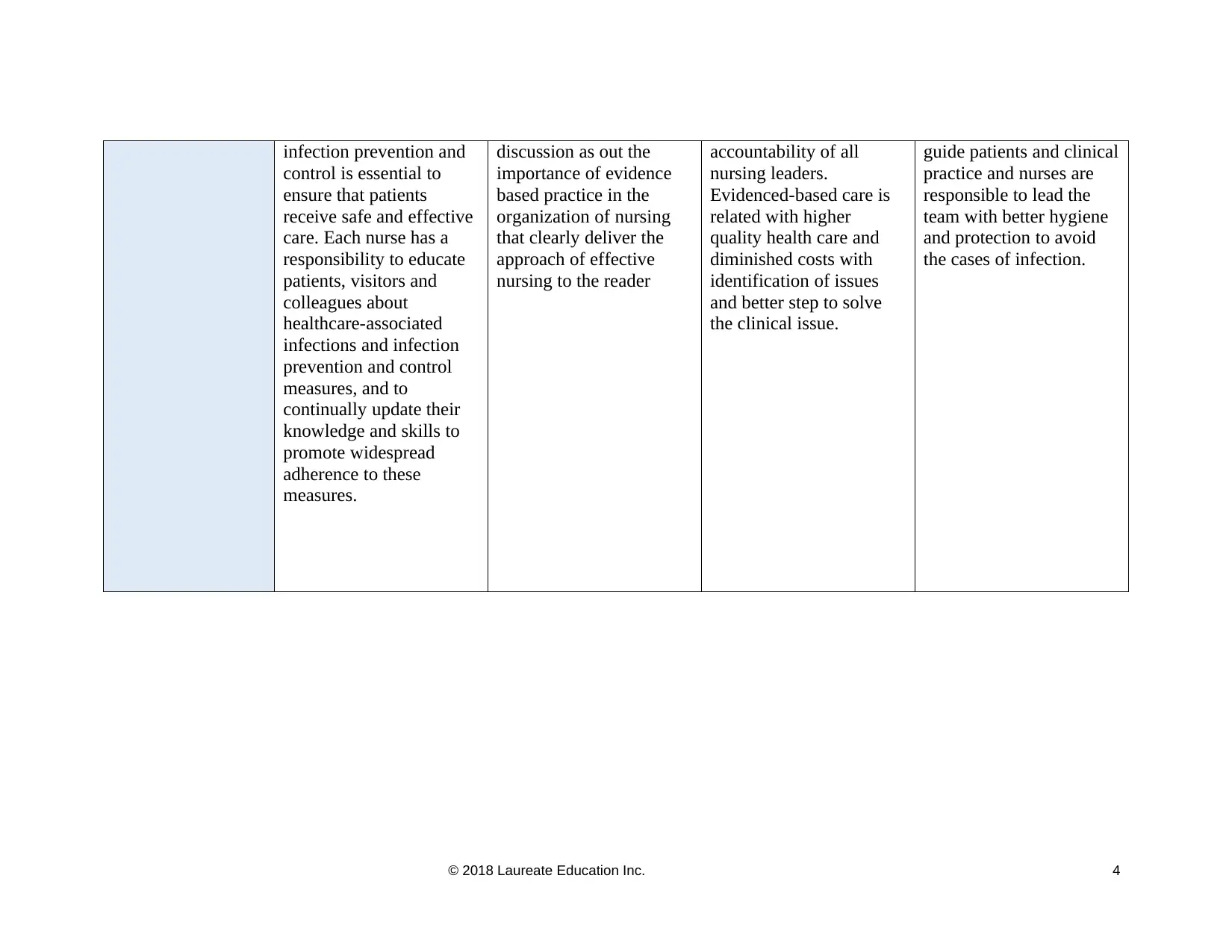Module 2 Assessment: Clinical Inquiry and Research Methodologies
VerifiedAdded on 2022/08/20
|4
|1218
|27
Homework Assignment
AI Summary
This assignment is a matrix worksheet designed to analyze four peer-reviewed articles related to clinical inquiry and research methodologies, specifically within the context of nursing and healthcare. The worksheet prompts a detailed examination of each article, including full citations, the rationale for selection in relation to a clinical issue of interest (such as infection prevention), and ethical considerations. It requires a summary of the aims, research methodologies (identifying if they are qualitative, quantitative, or mixed-methods), and strengths of each article's approach. Furthermore, the assignment necessitates an evaluation of the methodologies' reliability and validity. The articles cover topics like infection prevention, evidence-based practice, and nursing leadership. The goal is to synthesize information from multiple sources to understand how research contributes to improved patient care, especially concerning infection control, and the role of nurses in implementing evidence-based practices. The document serves as a template for students to complete a module assessment that covers clinical inquiry and research methodologies.
1 out of 4











![[object Object]](/_next/static/media/star-bottom.7253800d.svg)